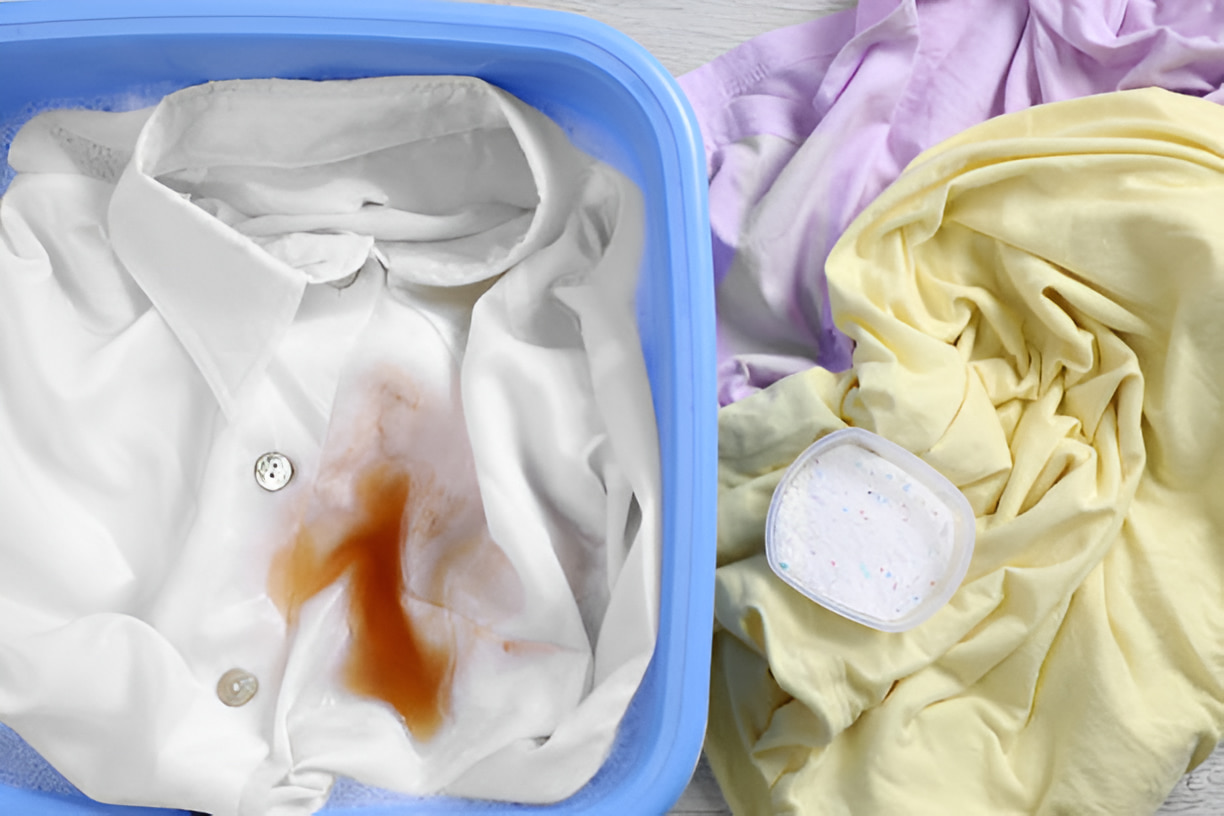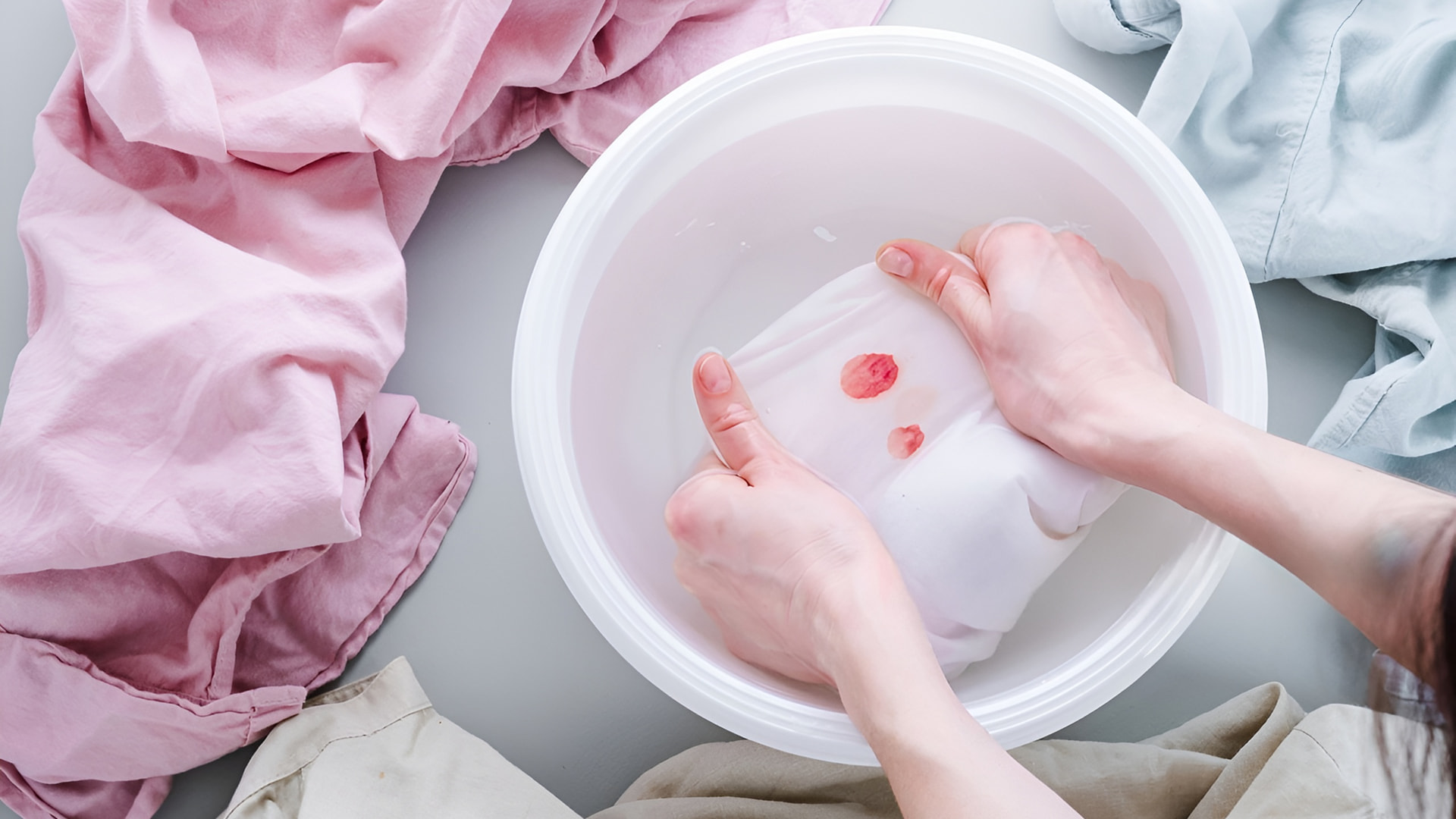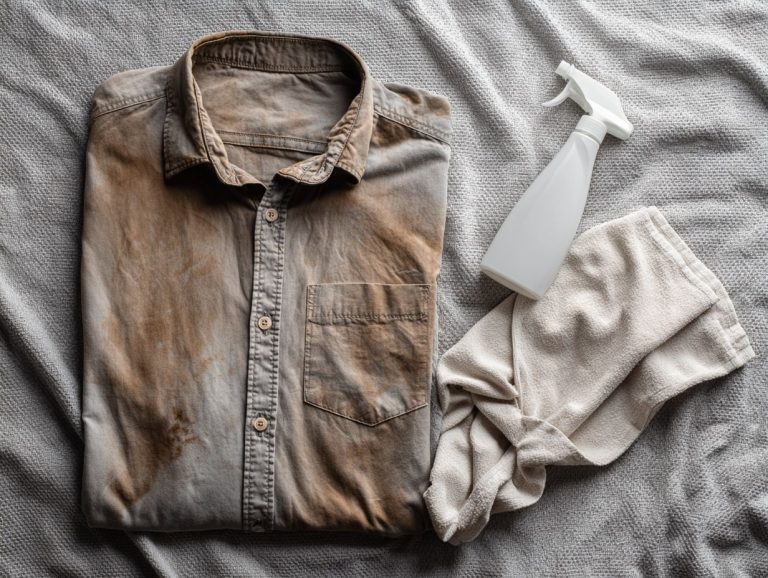How to Prevent Color Bleeding in Laundry
Nothing ruins a load faster than bright dye turning your whites into pastels. Color bleeding often happens, especially with new or dark clothes. Once dark dye settles on light fabric, the stain often survives repeated washes, making expensive pieces look permanently marred.
Why Does Color Bleeding Happen in Laundry?
Color bleeding happens when dye from one piece of clothing transfers onto another during the wash. It usually occurs when fabric dye isn’t fully set or when clothes are washed in water that’s too hot. Some fabrics, like cotton or rayon, are more likely to bleed, especially during the first few washes.
If you mix dark or bright colors with light ones, the risk increases. Red garments frequently release excess dye in early washes, which is why you’ll often see pink tints on lighter items.. Once dye has transferred, it can be hard, sometimes impossible to remove.
That’s why learning how to prevent color bleeding in laundry is so important. It helps you protect your clothes and avoid regret after every wash.
Suggested Reading: How to Prevent Color Fade in Clothes?
How to Sort Laundry to Prevent Color Bleeding
The first and most important step is to sort your laundry. Never wash dark and light-colored clothes together. Keep whites, pastels, and lights in one pile. Put dark and bold colors like red, navy, and black in a separate group.
If you’re washing something new or untested, it’s best to wash it alone for the first few times. Some garments will continue to bleed even after several washes. Separating laundry by color helps prevent accidents and keeps all your items looking their best.
Sorting may take a few extra minutes, but it can save you from major headaches later.
Why Cold Water Washing Prevents Color Bleeding in Laundry
Hot water opens up fabric fibers, making it easier for dyes to escape and transfer to other garments. Cold water, on the other hand, helps lock the dye into the fabric. It also reduces shrinkage and helps clothes last longer.
If you want to avoid color bleeding in laundry, cold water is your best friend. Unless your clothes are heavily soiled or the care label suggests warm water, always choose cold as your default wash setting.
Title Page Separator Site title
Title Page Separator Site title
This one simple habit goes a long way in keeping colors intact.
How to Use Color Catcher Sheets for Extra Protection
Color catcher sheets are a great tool to prevent color bleeding in laundry. These sheets trap loose dyes in the wash water before they can settle on other clothes. You just toss one into the machine with your load, and it does the job silently.
While they aren’t a replacement for sorting clothes, they’re a great backup for mixed loads or when you’re unsure about a fabric’s colorfastness. They offer an extra layer of protection, especially for families or busy households where perfect sorting isn’t always possible.
Keep color catcher sheets in every load that mixes lights and darks for extra spill protection.
Why Turning Clothes Inside Out Helps Prevent Color Bleeding
Turning clothes inside out reduces direct exposure of the outer fabric to water and friction. This helps preserve color and reduces bleeding, especially in dark or bold-colored items. It also prevents surface fading caused by contact with the washing drum.
For jeans, t-shirts, and printed clothing, this small action can make a big difference. It’s one of those habits that takes seconds but pays off over time. Inside-out washing also helps maintain the look of prints and patterns by reducing damage to the outer surface.
It’s a small change with big results.

How to Avoid Overloading Your Washing Machine
When your washing machine is overloaded, clothes don’t have enough space to move freely. That means more rubbing, more friction, and a greater chance for dyes to transfer between fabrics. It also prevents detergent from spreading evenly, leaving some areas dirty while others get soaked in dye.
To prevent color bleeding in laundry, give your clothes room to breathe. Wash smaller loads when possible, and don’t pack the drum too tightly. Your clothes will come out cleaner, fresher, and better protected.
A little extra space in the machine goes a long way.
Why Choosing the Right Detergent Stops Color Bleeding
Some detergents are designed specifically for color care. These formulas help lock dye into the fabric and prevent it from releasing into the wash water. If you often wash dark or bright clothes, it’s worth using a detergent labeled for colors or cold water.
Avoid bleach or whitening agents unless you’re only washing white clothes. These can break down dyes and increase the chance of color loss or bleeding.
The detergent you choose matters more than you might think. The right one can keep your clothes looking newer for longer.
Why You Shouldn’t Let Wet Clothes Sit Together
Once the wash is done, remove your clothes right away. Letting wet clothes sit in the machine can allow loose dyes to settle onto other garments, even after the cycle ends. The longer they sit together, the greater the chance for dye transfer.
If you’re not home when the cycle finishes, set a reminder or use a delay start feature so the wash ends when you’ll be around to move things to the dryer or drying rack.
Quick action after washing helps reverse color bleeding laundry risks before they even start.
How to Pre-Treat Bold Garments to Prevent Color Bleeding
If you’re worried about new or dark-colored clothes, pre-treat them before washing. Soaking them in a mix of cold water and salt or vinegar for 30 minutes can help set the dye. This makes it less likely to bleed in future washes.
Always test a small section of the fabric first to make sure it doesn’t react poorly. Pre-treating is especially helpful for handmade or imported garments where the dye process may not be as strong.
This extra step is worth it for items you really want to protect.
Why Air Drying Reduces Color Bleeding Risks
Machine drying creates heat and friction, which can cause colors to bleed or fade faster. Air drying is a gentler option. It helps fabrics hold their color longer and prevents rubbing between garments that could spread dye.
If you do use a dryer, choose a low-heat setting and remove clothes as soon as they’re dry. Avoid over-drying, which can also weaken fabric fibers and lead to faster wear and tear.
Air drying might take more time, but it’s much kinder to your clothes in the long run.
What to Do If Color Bleeding in Laundry Has Already Happened
Sometimes, even with your best efforts, color bleeding happens. When it does, act fast. Rewash the affected items in cold water with oxygen-based bleach, never chlorine bleach, which can worsen the problem.
Do not dry the stained clothes until the dye has been removed. Heat sets the stain, making it much harder to fix. For delicate or expensive items, you may want to consult a professional cleaner.
There are also specialty products designed to reverse the color bleeding effects. Look for color run removers that are safe for your fabric type.
Suggested Reading: How to Remove Common Stains Like a Pro?
How to Keep Clothes Looking New and Prevent Color Bleeding in Laundry
Preventing color bleeding is just one part of good laundry care. To keep your clothes looking new, always follow the instructions on the label, don’t wash them too often, and store them properly. Fold darks away from sunlight, avoid hanging heavy clothes by the shoulders, and rotate your outfits to reduce wear.
Your clothes work hard for you; taking care of them helps them last longer and look better. It also saves money and reduces waste, which is good for your closet and the planet.
Smart habits make laundry easier and more rewarding.
Conclusion
Learning how to prevent color bleeding in laundry is all about building better habits. Sorting clothes, using cold water, gentle detergent, and air drying can make a big difference. These simple steps help stop dye transfer and keep your laundry fresh and bright.
If color bleeding or tough fabric stains ever feel too tricky to handle on your own, The Laundry Hub is always here to help. Our expert team knows exactly how to treat delicate clothes, remove tough stains, and keep your garments in top condition, every time.
Contact The Laundry Hub at [email protected] or call 9718005482. Visit us at 02, Fatima Al Suweidi, UAE, for expert prevention of color bleeding in laundry and professional care you can trust.
Frequently Asked Questions
Can vinegar stop color bleeding in laundry?
Yes, soaking clothes in vinegar before washing can help set the dye, especially for new or brightly colored fabrics that may bleed during their first few washes.
What fabrics are most likely to bleed?
Cotton, rayon, and linen are more likely to bleed because they absorb and release dye easily. Synthetic fabrics usually hold color better during washes.
Can I fix clothes that bled in the wash?
You can try rewashing them in cold water with oxygen bleach. Avoid using heat until the stain is gone, or the dye may become permanent.
Why do new clothes bleed color more?
New clothes may have excess dye that wasn’t fully rinsed during manufacturing. That’s why they’re more likely to bleed in the first few washes.
Should I wash new clothes separately?
Yes, always wash new clothes separately the first few times. This helps prevent color bleeding and protects other clothes from unwanted dye transfer.







